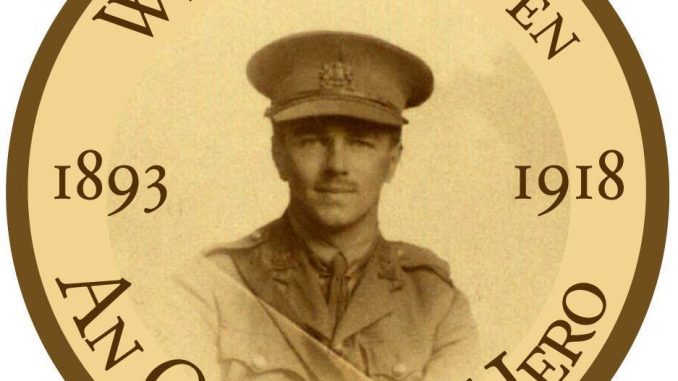
A major World War One commemoration is in doubt after being used as leverage for housing in the shadow of Old Oswestry hillfort, campaigners have revealed.
English Heritage hoped to excavate WW1 practice trenches on the hillfort plateau in 2016 as part of a special programme of national events marking Britain’s First World War centenary.
The project was set to research the relationship and activities linking Old Oswestry, Park Hall military camp and Oswestry-born, WW1 poet and soldier, Wilfred Owen, who was stationed at the camp in October 1916. It is thought that Owen trained on the hillfort’s practice trench network which replicated those used on the Western Front during the First World War.
But correspondence acquired through Freedom of Information by campaign group, HOOOH, reveals that the project hit problems during negotiations with the planning consultant and farmer behind the housing bid.
Referring to the commemoration in a letter in November 2013, J10 Planning wrote to English Heritage’s estates manager: “My client would be delighted to support your aspirations, but feels unable to agree being positive until such time as he has managed to obtain support from your ‘whole’ organisation in respect of the development and betterment proposals. I trust you appreciate the difficult position my client therefore finds himself in.”
HOOOH understands that English Heritage will need the farmer’s permission to carry out the dig on the hillfort plateau which he tenants for cattle grazing. But according to latest information, campaigners say that the project remains on hold until agreement is reached.
Historic England (formerly English Heritage) has opposed two out of three proposed housing sites on farmland abutting the hillfort in Shropshire’s SAMDev local plan. However, it has signed a statement of common ground with Shropshire Council agreeing development on the third site, known as OSW004, subject to master planning conditions.
Campaigners are shocked and disappointed that the proposed housing appears to be standing in the way of a poignant and important WW1 commemoration that would reinforce Old Oswestry’s heritage legacy.
John Waine of HOOOH said: “This is a WW1 commemoration project of national significance with the potential of bringing huge value for Oswestry and the deeper understanding of WW1 history. Sadly, it appears that without the farmer’s permission, Historic England remains unable to excavate a trench on the hillfort plateau. Should this kind of negotiation, bartering WW1 memories for profits, play a part in a supposedly transparent planning procedure? Does it not completely undermine the integrity of the process? We believe so.”
“The project has already been severely held back. If it’s going to happen at all, Historic England needs to crack on. HOOOH calls upon Historic England, the farmer and Shropshire Council to publicly state where they stand on this keynote WW1 project. We hope that common sense will prevail.”
Press comments
HOOOH also points to recent press comments by Historic England underplaying the significance of views across land south-east of the hillfort in defending its acceptance of development at OSW004.
Rosie Ryder of Historic England said: “In the case of Old Oswestry, after careful consideration we decided that the views to the west, north and east make a greater contribution to its significance than views to where the council’s proposed site would lie, because that view looks directly towards the town.”
HOOOH says this rejects evidence it presented at the Inspector’s public hearing which clearly articulated the heritage significance of Old Oswestry’s relationship with the Iron Age tribal centre of The Wrekin to the south-east, and the ancient roads in this direction that Old Oswestry was located to protect and control.
Neil Phillips of HOOOH said: “You have to wonder whether Historic England might be taking this stance just to salvage the WW1 dig.”
The archaeological excavation of a section of the practice trenches was set to uncover both WW1 history as well as pre-history giving insights into the origins of the 3,000 year old hillfort. The last archaeological excavation on the hillfort was carried out in 1939-40 by Professor William Varley.
Old Oswestry’s network of WW1 practice trenches is one of few examples of its size and complexity that has survived complete. Even now, the trench layout can be clearly seen from aerial photography revealing its impressive scale and detail.
Based on other archaeological evidence, it is known that further extensive practice trenches exist elsewhere within the hillfort’s hinterland. The trenching catered for well over 4000 soldiers at any one time during the First World War.
Leave a Reply